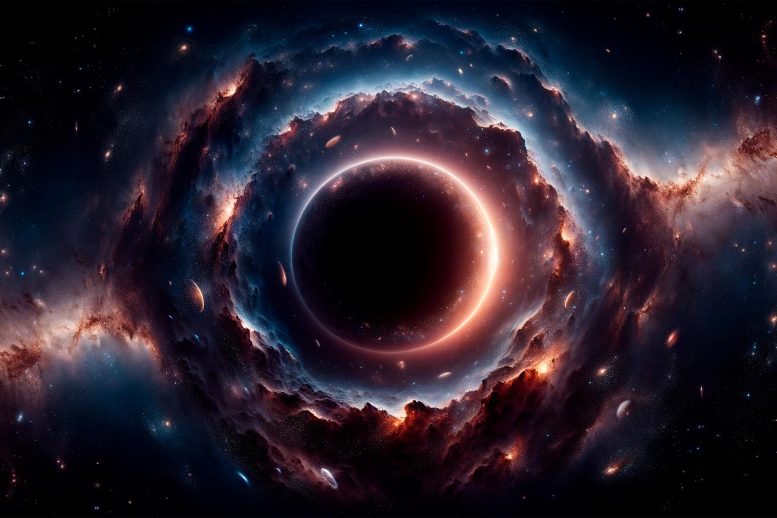
The recent “Hubble tension” in cosmology, marked by conflicting expansion rate measurements, raises questions about the standard cosmological model. A new theory posits that a giant, underdense void could account for these discrepancies, challenging traditional views of matter distribution in the universe and suggesting a potential overhaul of Einstein’s gravitational theory.
Cosmologists propose a giant void in space as a solution to the “Hubble tension,” challenging conventional models and suggesting a revision of Einstein’s gravity theory.
One of the biggest mysteries in cosmology is the rate at which the universe is expanding. This can be predicted using the standard model of cosmology, also known as Lambda-cold dark matter (ΛCDM). This model is based on detailed observations of the light left over from the Big Bang – the so-called cosmic microwave background (CMB).
The universe’s expansion makes galaxies move away from each other. The further away they are from us, the more quickly they move. The relationship between a galaxy’s speed and distance is governed by “Hubble’s constant,” which is about 43 miles (70 km) per second per Megaparsec (a unit of length in astronomy). This means that a galaxy gains about 50,000 miles per hour for every million light years it is away from us.
But unfortunately for the standard model, this value has recently been disputed, leading to what scientists call the “Hubble tension.” When we measure the expansion rate using nearby galaxies and supernovas (exploding stars), it is 10% larger than when we predict it based on the CMB.
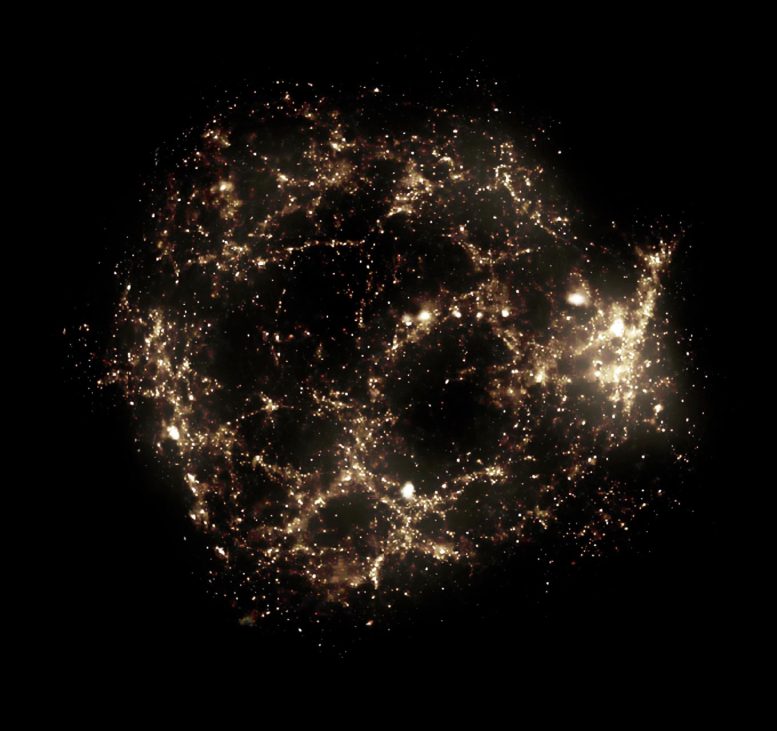
Artist’s conception of the Giant Void and the filaments and walls that surround it. Credit: Pablo Carlos Budassi
In our new paper, we present one possible explanation: that we live in a giant void in space (an area with below average density). We show that this could inflate local measurements through outflows of matter from the void. Outflows would arise when denser regions surrounding a void pull it apart – they’d exert a bigger gravitational pull than the lower density matter inside the void.
In this scenario, we would need to be near the center of a void about a billion light years in radius and with density about 20% below the average for the universe as a whole – so not completely empty.
Such a large and deep void is unexpected in the standard model – and therefore controversial. The CMB gives a snapshot of structure in the infant universe, suggesting that matter today should be rather uniformly spread out. However, directly counting the number of galaxies in different regions does indeed suggest we are in a local void.
Tweaking the laws of gravity
We wanted to test this idea further by matching many different cosmological observations by assuming that we live in a large void that grew from a small density fluctuation at early times.
To do this, our model didn’t incorporate ΛCDM but an alternative theory called Modified Newtonian Dynamics (MOND).
MOND was originally proposed to explain anomalies in the rotation speeds of galaxies, which is what led to the suggestion of an invisible substance called “dark matter”. MOND instead suggests that the anomalies can be explained by Newton’s law of gravity breaking down when the gravitational pull is very weak – as is the case in the outer regions of galaxies.
The overall cosmic expansion history in MOND would be similar to the standard model, but structure (such as galaxy clusters) would grow faster in MOND. Our model captures what the local universe might look like in a MOND universe. And we found it would allow local measurements of the expansion rate today to fluctuate depending on our location.
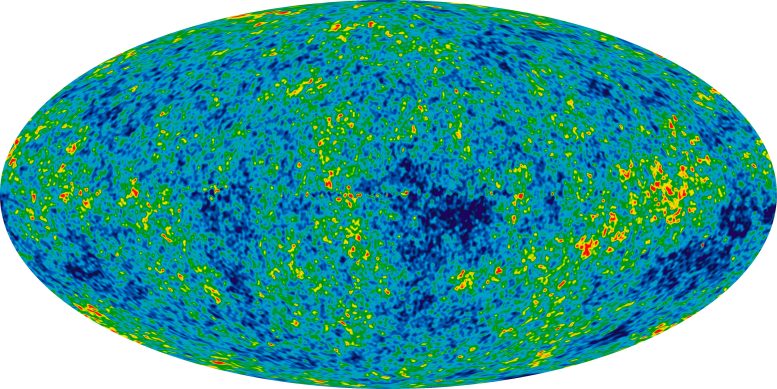
CMB temperature fluctuations: Detailed, all-sky picture of the infant universe created from nine years of WMAP data reveals 13.77 billion-year-old temperature fluctuations (shown as color differences). Credit: NASA / WMAP Science Team
Recent galaxy observations have allowed a crucial new test of our model based on the velocity it predicts at different locations. This can be done by measuring something called the bulk flow, which is the average velocity of matter in a given sphere, dense or not. This varies with the radius of the sphere, with recent observations showing it continues out to a billion light years.
Interestingly, the bulk flow of galaxies on this scale has quadruple the speed expected in the standard model. It also seems to increase with the size of the region considered – opposite to what the standard model predicts. The likelihood of this being consistent with the standard model is below one in a million.
This prompted us to see what our study predicted for the bulk flow. We found it yields a quite good match to the observations. That requires that we are fairly close to the void center, and the void being most empty at its center.
Case closed?
Our results come at a time when popular solutions to the Hubble tension are in trouble. Some believe we just need more precise measurements. Others think it can be solved by assuming the high expansion rate we measure locally is actually the correct one. But that requires a slight tweak to the expansion history in the early universe so the CMB still looks right.
Unfortunately, an influential review highlights seven problems with this approach. If the universe expanded 10% faster over the vast majority of cosmic history, it would also be about 10% younger – contradicting the ages of the oldest stars.
The existence of a deep and extended local void in the galaxy number counts and the fast observed bulk flows strongly suggest that structure grows faster than expected in ΛCDM on scales of tens to hundreds of millions of light years.
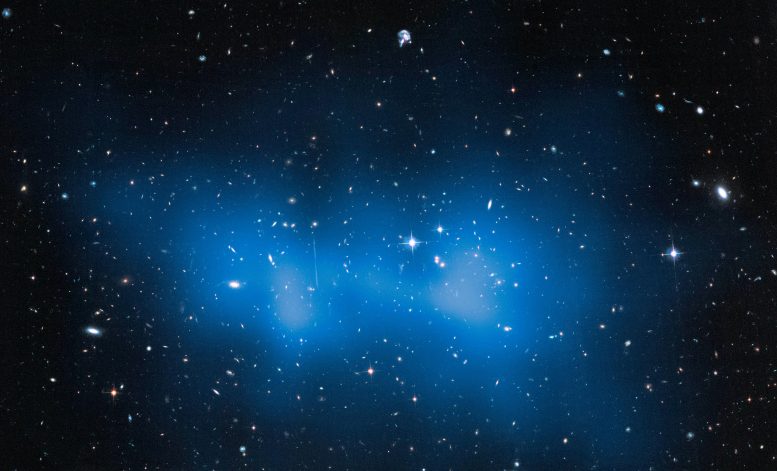
This is a Hubble Space Telescope image of the most massive cluster of galaxies ever seen to exist when the universe was just half of its current age of 13.8 billion years. The cluster contains several hundred galaxies swarming around under the collective gravitational pull. The total mass of the cluster, as refined in new Hubble measurements, is estimated to weigh as much as 3 million billion stars like our Sun (about 3,000 times as massive as our own Milky Way galaxy) – though most of the mass is hidden away as dark matter. The location of the dark matter is mapped out in the blue overlay. Because dark matter doesn’t emit any radiation, Hubble astronomers instead precisely measure how its gravity warps the images of far background galaxies like a funhouse mirror. This allowed them to come up with a mass estimate for the cluster. The cluster was nicknamed El Gordo (Spanish for “the fat one”) in 2012 when X-ray observations and kinematic studies first suggested it was unusually massive for the time in the early universe when it existed. The Hubble data have confirmed that the cluster is undergoing a violent merger between two smaller clusters. Credit: NASA, ESA, and J. Jee (University of California, Davis)
Interestingly, we know that the massive galaxy cluster El Gordo (see image above) formed too early in cosmic history and has too high a mass and collision speed to be compatible with the standard model. This is yet more evidence that structure forms too slowly in this model.
Since gravity is the dominant force on such large scales, we most likely need to extend Einstein’s theory of gravity, General Relativity – but only on scales larger than a million light years.
However, we have no good way to measure how gravity behaves on much larger scales – there are no gravitationally bound objects that huge. We can assume General Relativity remains valid and compare with observations, but it is precisely this approach which leads to the very severe tensions currently faced by our best model of cosmology.
Einstein is thought to have said that we cannot solve problems with the same thinking that led to the problems in the first place. Even if the required changes are not drastic, we could well be witnessing the first reliable evidence for more than a century that we need to change our theory of gravity.
Written by Indranil Banik, Postdoctoral Research Fellow in Astrophysics, University of St Andrews.
Adapted from an article originally published in The Conversation.![]()





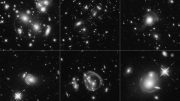



An explanation using multi-scalar filaments of gravitational spin flow, recently shown at one scale in the side-scatter of bright columns of aligned spinning protons lounging around near the galactic center, unfortunately does not resort to the extradimensional spacetime continuum heavenly firmament type of void theory enjoyed by LCDM+ science funding royalty.
Basically, the idea was to equate said filaments with paths of enhanced gravity flows, thus with enhanced red-shifting, cosmological coherence/entanglements, and filamentary dark matter effects. On top of that, the teetering notion that, in any average bound set of filaments, the distribution of filament lengths will normally tend to skew toward shorter filaments, was precariously piled, with absolutely no extradimensional support whatsoever. As it could not be visualized with a magic marker and a heavenly inspired imperial balloon, it was most properly deemed hopeless, totally unprofessional, and without merit.
There’s a Massive Void inside of me, too.
Great comment and great article too👍🧬
The last part of this article, Einstein was thought to of said, if true sends a message that when we become to know how to escape the bounds of our closed system the earth and travel easily this is when our intuitive nature would be answered. Try thinking outside the closed box.
Black Hole is a function of the quantum physics connections that lead other planetary bodies in snc with the rotation spin within its core. Any interconnection is a function with kinetic energy that has a link chain reaction response like clock work. Kinetic energy entanglement will determine the action of the black hole in question which brings around its own characteristics based on the energy available even from an entanglement long distance. Quantum physics will always leave interactive long distance communications among energetic stars. Certain magnetic fields becomes the communication links for the full next step mechanisms.
Magnetic links and Quantum Entanglement may be the main basic basis for space evolution!
Perfectly and eloquently said, so true and personified, especially in my own outlook on so many of the same things 🧬💯
Maybe some day the so-called scientists that keep pushing this drivel will realize the actual truth. There was no single Big Bang. We live in a universe that is constantly regenerating and black holes are the recyclers.
Red Shift assumptions give wrong values as areas with more space dust have dimmer red shifts, not older galaxies. This error has been perpetuating for a century, based on 5be then assumption that space was EMPTY. We now, of course, know that it is not remotely empty, yet instead of reconciling Red Shift and acknowledging our mistake, we chose instead to INVENT Dark Matter and Dark Energy, which are nothing more than mathematical “fixes” to a problem that doesn’t actually exist.
It’s absolutely mind blowing that this continues on and on and on, even in the face of obvious data from the Webb telescope, but such is human ego. Like plaque with Alzheimers, humans simply cannot admit they were wrong and go back to the drawing board, despite failure after failure after failure. How many will needlessly suffer from Alzheimers because we spend decades barking up the wrong tree? Absolute insanity.
One would suppose that with the types of accelerations with distance claimed evident from the basic Hubble red-shift expansion story that ultimately, assorted galaxies or the empty space between them, would get extremely “heavy” as they or the space between them approaches the speed of light.
Obviously I am not an astrophysicist as I cannot think of a good excuse that excludes this daft idea.
Early on a basic assumption was made which has since proved false. The scattered dot patterns in the classic double-slit experiments are not caused by a duality of particles and waves but by pulsing locally generated outwardly radiating lines of gravity force. Later, Hubbell misinterpreted red shift as being indicative of cosmic objects moving away from earth in all directions. Additionally, gravity lensing proves that fields of pulsing lines of radiant gravity force can affect even photons which will accelerate (blue shift) when departing the decreasingly dense fields of their sources and decelerate (red shift) as they arrive in our increasingly dense local field of gravity. Accidentally discovering the true nature of gravity in 2009 and not devising, producing and uploading a first demonstration video until 2012, I still haven’t devised a label for what I’ve personally found to be true. How about labeling it the “NETSA” (Newton-Einstein-Tesla-Shaver-Attraction) theory of gravity? Then, perhaps, scientists can quit fantasizing about dark matter and dark energy and get on with the possibly impossible task of estimating the actual age and size of the universe.